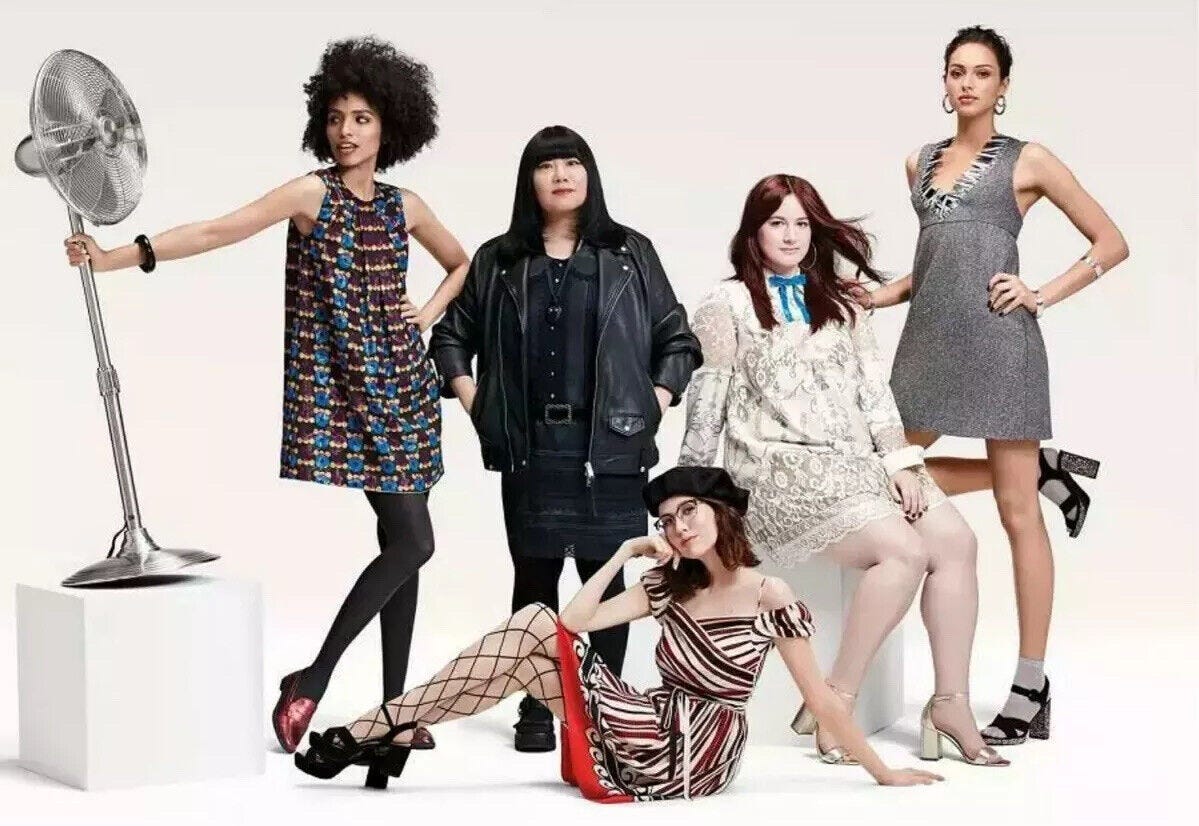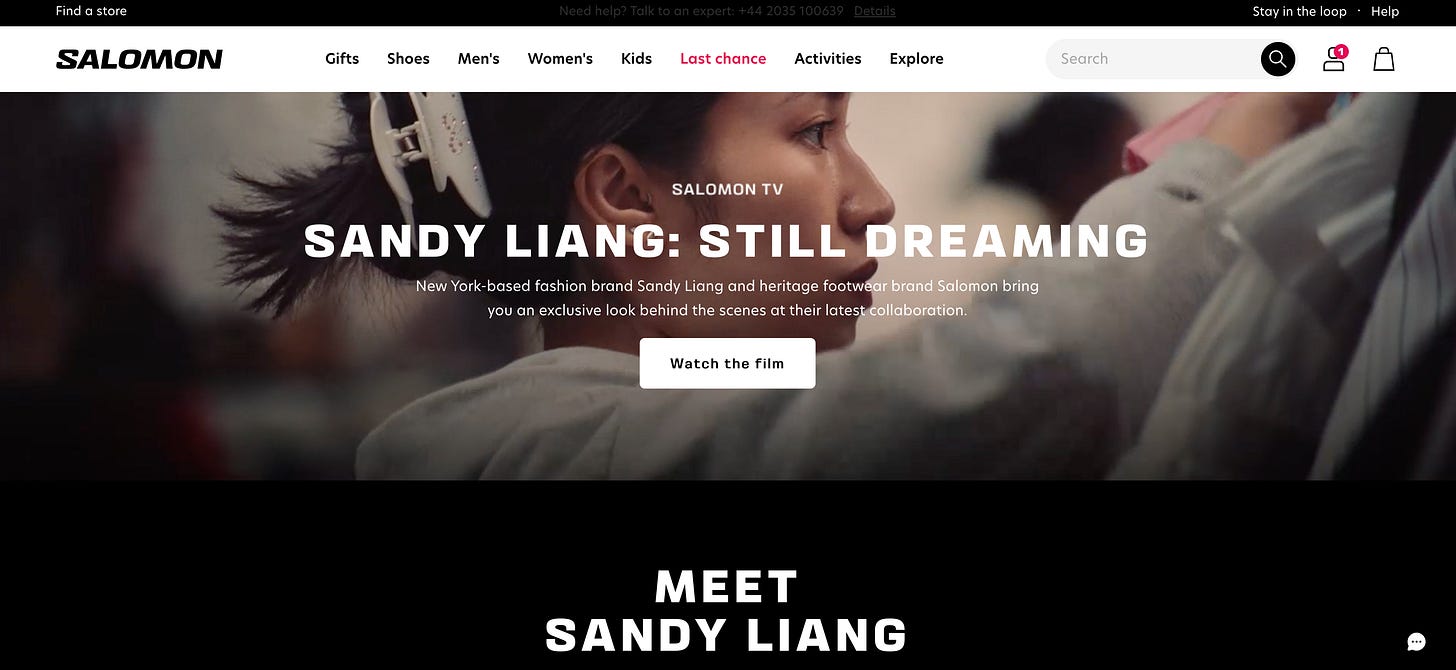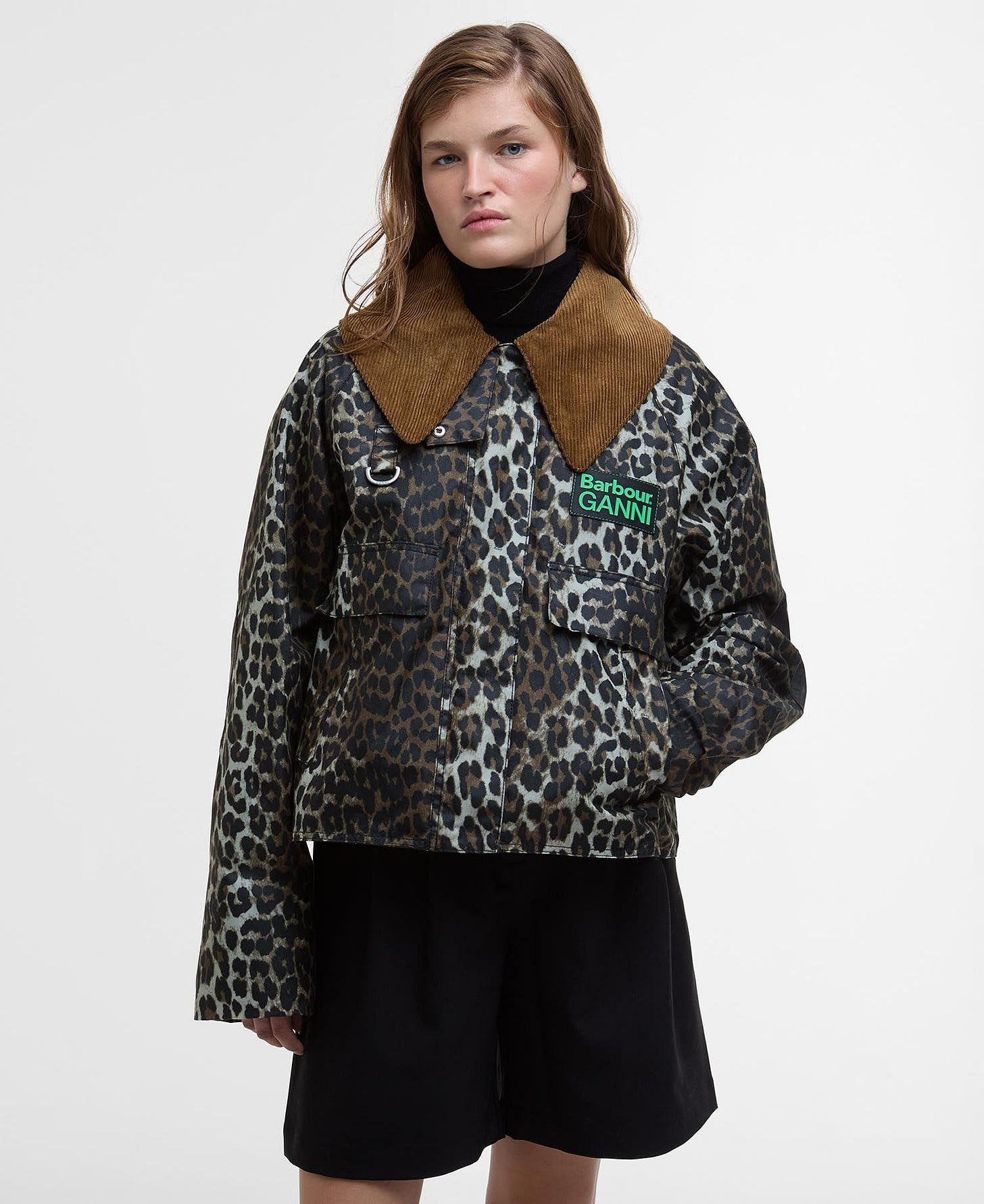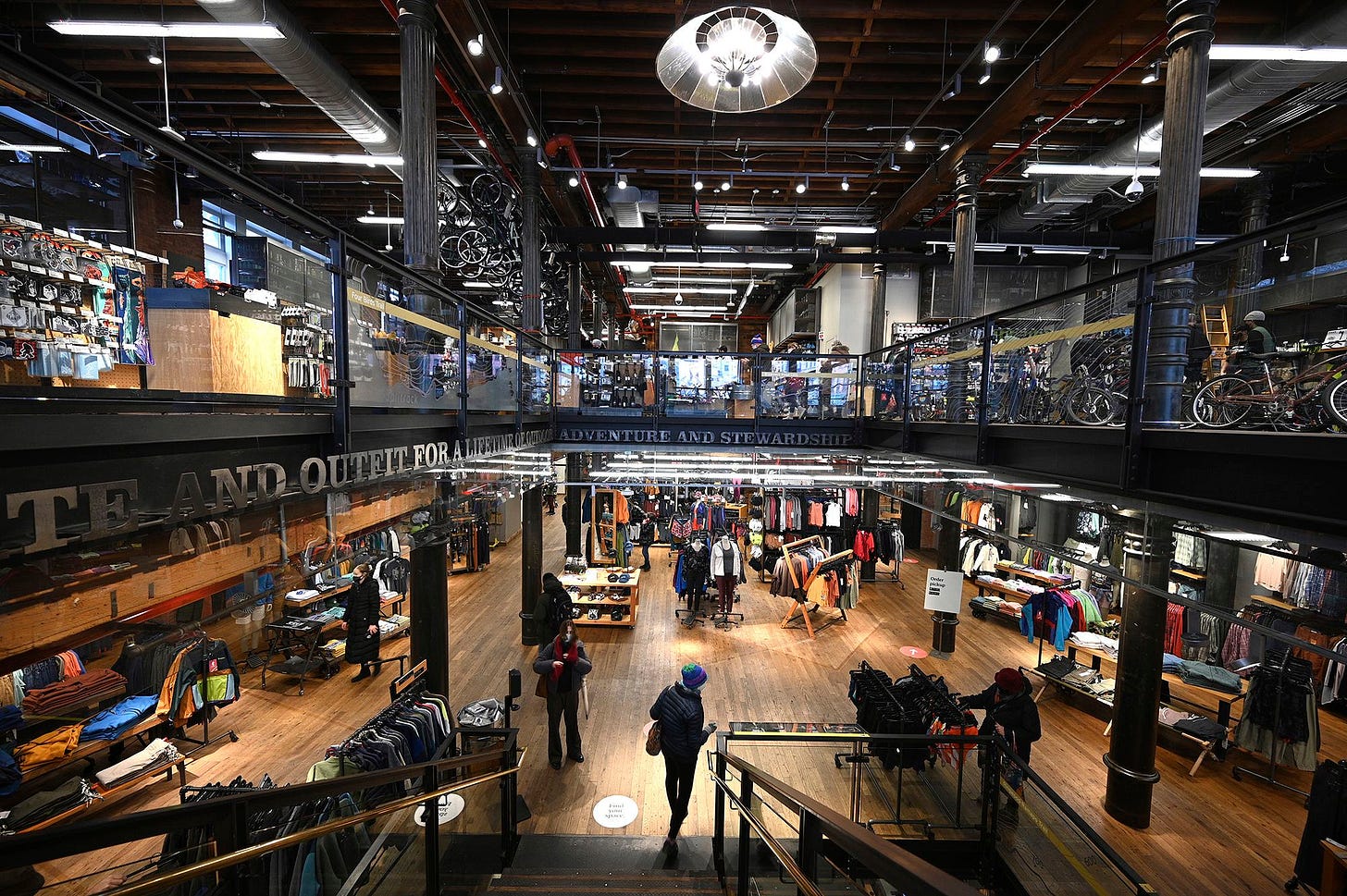Fashion and the great outdoors
How fashion brands are partnering with outdoors brands to make some very cool (and strategic) things
My first memory of brand collaborations were the Target partnerships with designers, like the iconic Anna Sui collection inspired by Gossip Girl from 2009. As a high schooler, it was so exciting to get a piece of a fancy New York designer in my local store! Around this same time, I recall people started referring to Target as “Tar-Jay” - it became the boujier cousin of Walmart and (RIP) K-Mart. This perception of Target as a step above its peers has remained. Whether these designer collaborations were the turning point, I’m not sure. But they did something to set Target on its trajectory. Since then, I’ve remained interested in how brands partner together and how they use collaborations to shape their strategies.
I am both an outdoor enthusiast and a fashion girl. It’s been fun for me to observe the rise in collaborations between luxury brands and outdoors brands over the past several years. Today I’m going to share some thoughts on this growing category of collaborations.
The Outdoors Opportunity
Fashion brands are interested in working with outdoor brands in part because of the growth in the outdoor market. From the Business of Fashion:
In the US, 82 percent of people said they had participated in such outdoor activities, compared to 60 percent in 2020
In China, by the end of 2021, more than 400 million people were taking part in outdoor sports, and between 2021 and 2023, the search volume for “outdoor” on Chinese marketplace Tmall surged more than 600 percent.
In 2022, revenues for the outdoor category were 24 percent higher than pre-pandemic times, drawing attention of financial deal makers. Outdoor wear has been a highly active investment category since the pandemic, with deals involving brands and retailers like Moosejaw, Marathon Sports and Topo Athletic.
In addition to the market growth, outdoors brands have reputations for quality and are exclusive in their own rights - though through a different lens than fashion brands. They command high price points and attract a higher-income consumer. In fact, with the popularization of gorpcore fashion (aka wearing your outdoor gear as everyday clothes), there is a shrinking distinction between fashion and outdoor gear. I’m sure my dad, who has been wearing a bright orange Eddie Bauer jacket everyday for years, will be happy to hear this!
Fashion brands aren’t breaking new ground with this type of collab. Sneaker collabs and streetwear collabs have been popular for years. What I’ve observed more recently is an increase in indie fashion brands partnering with outdoors/activewear in a purposeful way. For example:
…and many more!
I also believe this category benefits from some of the broader trends around wellness and self-care - investing in oneself and one’s hobbies as a more protected class of consumer spend that may be more insulated from cutbacks. As we ride out a broader luxury downturn, this could be a smart area to focus.
Why do brands collaborate?
It’s a lot of work to launch and operate a successful brand partnership. It needs to be clearly beneficial to both sides.
Collaborations are about reaching new customers, broadening brand awareness, and increasing buzz. High-end fashion brands sell to the 1%, and while we may know names like Gucci and Prada, independent labels are often less well-known to the average consumer, making it challenging to sustain a large customer base. On the other side, outdoors brands have customers who may shop with them for certain outdoor activities, but are trying to grow across categories. Gaining credibility in the fashion world can help them in this.
Diving deeper, one common framework for evaluating marketing strategy is the 4 P’s: Product, Place, Promotion, Price. Despite being one of the more “basic” marketing frameworks, it holds up in many scenarios. A deeper explainer here. We can use this lens to understand some motives behind brand collaborations:
Price: For a high-end fashion brand, a smart collab offers the chance to play at a different, often lower, price point. This can allow the brand to reach new buyers who may later “graduate” to higher-priced items with that brand.
Take the pricing of Proenza x Sorel as an example. The Chelsea boot is priced at $400, compared to ~$700+ for the rest of Proenza’s assortment online right now. This is a much sharper price point, but does not skew into “mass” territory. This allows the brand to preserve a solid margin and avoid any concerns around diluting the brand. I think this is a smart position to occupy, and I can see how this offering would appeal to a younger shopper who is looking for an investment piece but isn’t quite ready for a full designer price tag.
Place: For many high fashion x outdoors collaborations, both brands have a designated landing page for the collection and feature it on social channels. This is in contrast to more traditional collaborations like Target x Designer, in which only the mass partner sells the items on their properties (online and store). In this latter case, the retailer handles distribution and the designer is lending his/her name, taste, and design expertise to grant prestige to the collection. For our fashion and outdoors brands, both brands are very valuable in their own ways, and both lend credibility to the other. Fashion represents innovation, creativity, coolness, exclusivity. Outdoors represents innovation as well, in addition to quality, function, and authenticity.
Looking at two landing pages (here’s Proenza’s, here’s Sorel’s), you’ll see how consistent marketing and product images and descriptions are used between the brands, representing close alignment in creating these assets.
Many times, these collaborations sell out. At this point, you have a potential customer on your site, which is a valuable opportunity. What’s your strategy? One collaboration I wanted to shop but failed to get in time was Sandy Liang x Salomon. Even though the collection dropped a few months ago, I was pleasantly surprised to see that Salomon still has a rich landing page for the collection, introducing Sandy Liang and the products. While the shoes are no longer available, there are clear CTAs (call to actions) to subscribe for updates about future collections. They also have all the product detail pages still active, with the ability to sign up for notifications.
In contrast, the collection page has been removed from Sandy Liang’s website. Keeping this URL active with redirects or relevant landing page in place is a great opportunity to drive the customer to other relevant products and keep them engaged for future partnerships.
In addition to touting these collections on site and via owned social channels, brands are making the items available at key retail partners.
Promotion: A major benefit of brand collaborations is the buzz that goes along with them. A key pillar of fashion and outdoors collab strategy is seeding these products with influencers - this is how I often hear about these products for the first time. As an example, Hoka x Reformation’s sustainable sneakers were seeded to influencers and shared on Tiktok.
Additionally, brands are showcasing these products on the runway, driving coverage in the fashion press. I heard about the upcoming Cecelie Bahnsen x The North Face collaboration after it was shown on the runway for SS25. I promptly signed up to be notified when the product drops.
Most of these brand collaborations utilize a drop model, meaning they release a limited amount of product at a set time across all channels. This “drop” time is communicated to customers ahead of time in marketing. I like to see brands leveraging a “Notify” feature like Cecelie Bahnsen is doing here for consumers who visit the site before the drop is live. This allows them to capture email and/or phone number and notify the consumer when the products are on sale. If I was being picky, I would recommend making this Notify tout much more prominent - it’s currently in the footer and doesn’t really stand out against a photo background.
Product
The products that result from successful collaborations often riff on hero products from both brands’ own collections, such as the signature floral motif in Cecelie Bahnsen’s designs or the chunky rubber sole in Sorel’s designs. Successful collaborations may start to build a brand identity of their own - for example, Ganni and Barbour having been collaborating for multiple seasons and are known for the combination of heritage silhouettes and fabrics with pops of modern, bright colors and prints.
Risks
There are some risks to brand collaborations. A key risk is that partnering with the wrong brand can alienate your existing, core customers. Let’s say you’re a specialty outdoors brands that sells to environmentally-conscious consumers. A poorly-communicated partnership with a fashion brand could be perceived as out-of-touch or wasteful. To mitigate this risk, any partnership must closely align with your brand values and those of your customers.
An under-appreciated risk is that these partnerships take a lot of time and resources away from the core business. While they are splashy and fun, it can be hard to calculate the opportunity cost of what could have been built internally vs. pursuing outside partnerships. That said, as a consumer, I love a good collab!
What’s next for fashion and outdoors brands?
As an outsider to these companies, it’s hard to say exactly how successful these collaborations have been. However, it appears many of the better-known collections sell out quickly, restock often, generate significant buzz, and result in multiple seasons of partnership. This indicates that this sort of partnership bears fruit for both indie fashion and outdoors brands. I would expect to see more partnerships like this in the future.
I’d love to see brands like Osprey, Merrell, Arc’teryx, and REI partner with fashion brands on some cool collections. Missing from this list is Patagonia. Fashion partnerships don’t seem to align with their brand values, though a uniquely environmentally-focused independent fashion brand could be an exception one day.
I’d also love to see some of these products showcased at the REI flagship store in Soho, perhaps merchandised alongside other relevant fashion offerings, and in other flagship outdoors retailers.
Stay Curious,
Melina











